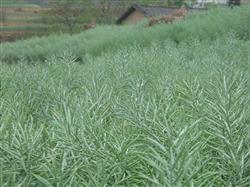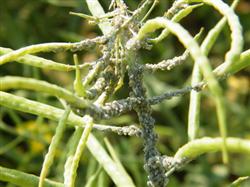Occurrence characteristics and control methods of weeds in rape field

The occurrence species of weeds in rape field in Jiangsu Province are basically the same as those in wheat field. The main weeds in dry stubble rape field are Pig calamity, Mairenzhu, Mother-in-law, Chenopodium, Artemisia annua, Shepherd's purse, repressed blue vegetable, Cardamine, Kentucky bluegrass, wild oat, flat storage, wheat bottle grass, prickly cabbage, small spiral flower and so on. The harm of wild oats in some areas is serious. The main weeds in rice stubble rapeseed field were Niangmai, Niangmai, hard grass and Kentucky bluegrass, while others were clam grass, pig calamity, Niufan wisp, broom grass, big nest vegetable, Cardamine cardamine, shepherd's purse, mother-in-law, rice Croucher and so on. The number of weeds in rice stubble field is more than that in dry stubble field. Occurrence characteristics (1) in the rape field planted by ploughing and replanting, the hay peak appeared at 10-30 days after sowing, and the amount of grass was large in this period, which was the main weed population in the rape field. The main weeds in dry stubble land are broad-leaved weeds, and the amount of grass production is relatively small, while the weeds in rice stubble rape field are mainly Gramineae weeds with a large amount of grass production. (2) in the rape field sown with plate stubble, because the surface soil layer outside the planting hole (row) was not destroyed, the surface weed seeds germinated before sowing and formed an early weed community in the field, and the germination peak of weeds in the planting hole (row) and upturned soil layer appeared at 10-30 days after sowing. Control methods (1) soil treatment during sowing and planting period. The rape fields dominated by grasses such as Niangmai in Japan can be applied and mixed with 48% trifluralin EC 100 ml 150 ml per mu 3-5 days before planting, or 96% Metolachlor EC 45 ml 60 ml or 48% Metolachlor EC 50 ml or 50% Acetochlor EC 75 ml 100 ml before or 1 day after transplanting. In the rape field where Gramineae weeds are mixed with broad-leaved weeds such as cattle, shepherd's purse and curly ear, the mixture of Acetochlor and clomazone can be applied before rape transplanting. (2) treatment of stems and leaves after seedling. Rape fields dominated by Gramineae weeds were controlled before the 4-leaf stage of weeds with 10.8% efficient flopyrine 20ml / mu, or 10% quizalofop EC 35ml / mu, or 6.9% oxazolyl EC 40ml / mu. The fields, which are mainly composed of small nest vegetables, Artemisia annua, rice Croucher, Croucher, wild geranium, etc., are controlled in autumn and winter with 50% herbicide suspension 30ml per mu and 40 kg of water spray. The fields mainly composed of hard grass and Kentucky bluegrass were controlled at the stage of 3 leaves and 4 leaves with 20 ml of 24% ketene EC per mu.
- Prev

Rape aphid
The main aphids harming rapeseed are radish aphid (Lipaphiserysimi), peach aphid (Myzuspersicae) and cabbage aphid (Brevicoryne6rassicae). Radish aphid and peach aphid are common in all provinces (regions) of China. These three kinds of aphids often occur in rape with needle-like mouthparts.
- Next

Diagnosis and skillful treatment of red and yellow seedlings in rape seedling stage
Sclerotinia sclerotiorum, commonly known as "white stalk", "hemp stalk", "mildew" and so on, is one of the main diseases affecting the growth of rapeseed. The prevention and control of Sclerotinia sclerotiorum should be based on prevention, and the main technical measures are as follows. 1. To prevent seeds from carrying bacteria through screening, air separation, seed dressing and other methods to eliminate sclerotia and kill seeds.
Related
- The first cup of black tea in spring, the flavor and history of tea gardens in Kenya, Africa
- The computer can not only choose potatoes, but also grow tea rice. AI will grow winter oolong tea champion.
- It is not only the inflated tea bitten by insects, but also engraved with the four seasons tea in Beipu.
- The Oriental Beauty Tea Festival in Zhuxian County takes the stage at the weekend to experience the plus-size feast of oil tea.
- & quot; Oriental Beauty Tea & Exploration of Emei in Hsinchu, the hometown of quot;
- The new variety of strawberry "Tainong 1" dessert is the first choice with mellow aroma. Crimson gorgeous
- History of Tea in Taiwan: from Wild Inner Mountain to Export Tea Garden
- Two types of Taiwan Oriental Beauty Black Tea won the British three-Star Award for Childhood Tea Xiang Zhang Jiaqi changed from pilot to champion tea maker.
- Banana species and varieties: the planting history of Taiwan Xianren banana and dwarf banana is long, is banana disease resistant?
- Coffee planting Technology: Qianjie Coffee from Seedling to harvesting

